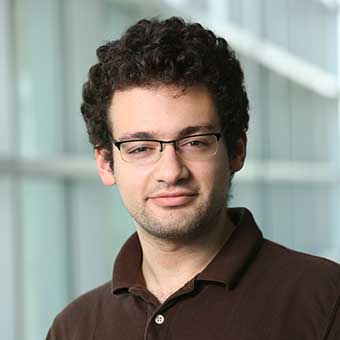Zachary Sustiel
 Brandeis University / Physics
Brandeis University / Physics
Hosted by Baskaran's Lab
“Trading Phases: Bending and Defect Formation in a Confined Active Nematic Suspension”
Zachary Sustiel, Aparna Baskaran
Abstract
Active fluids, composed of particles that undergo self-driven microscopic motion, often exhibit unusual macroscopic non-equilibrium behaviors. For instance, when otherwise stationary, ordered nematic rods are autonomously driven to extend or contract, small bends in a group of aligned rods grows larger. This phenomenon, known as bend instability, often results in disorder and the formation of topological defects in the order field. We seek to understand the phenomenology of an active nematic confined to a channel, whose walls induce nearby rods to align parallel to them (parallel anchoring boundary conditions). We study a hydrodynamic theory for an active nematic suspension, using a multigrid method to numerically solve the equations in a long channel at various activity and channel width.
Our primary findings to date are as follows: (i) As expected, under very strong confinement we get a uniform nematic because the anchoring properties of the wall dominate, while under very weak confinement we get a disordered defective nematic because active dynamics dominate. (ii) In the intermediate region we find two novel steady states – an undulating nematic, and a periodic defective nematic. We have characterized the properties of these steady states as a function of system parameters. In the future, we hope to build upon these results by studying system behaviors while varying other parameters, and by comparing these behaviors to results under different confinements.
Support
SMURF (Summer MRSEC Undergrad Research Fellowship)